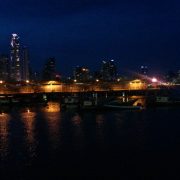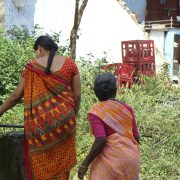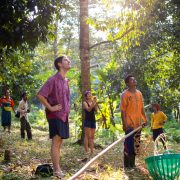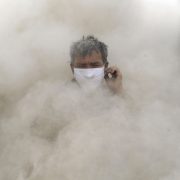If You Plant It, They Will Grow: Vancouver’s Strategy Toward Sustainability
Post by Casey Osborn and Jimmy Tran, MURP candidates ‘15 and ‘16
Our final day in Vancouver was themed “Green Spaces and Sustainable Places.” This catch-all day looked at how Vancouver was meeting the goals of its sustainability plan, the role parks played in city planning, and how the urban and natural environment were integrated and made accessible to residents. These topics are especially critical to Los Angeles, which recently released its Sustainability Plan. Despite the fact that the city had many lofty goals in the plan (reduce carbon by 33%, double the number of green jobs over 2010 levels by 2020 and reduce per capita water consumption by 33%), some of them were on their way to being achieved well before schedule. In his presentation, Assistant Director of Sustainability Doug Smith made an important point – never be afraid to set ambitious targets.
One of the ambitious targets in its Greenest City Plan, was that every citizen be within a five minute walk to green space by 2020. Vancouver is already pretty lush – this is in part due to Vancouver’s wet climate, which keeps the vegetation thick and paints the city in a spectrum of green, but also because of Vancouver’s concerted effort to increase access to green space. Los Angeles may not be able to adopt Vancouver’s climate (although in times like these we might wish we could!), but it can adapt its policies. Could LA have a similar goal of accessible public open space, in whatever size or form?
Vancouver’s solution for green spaces is a well-crafted urban forest strategy created and implemented by the Parks and Recreation department. Their goal of planting 150,000 more trees by 2020 was the result of cataloguing the city’ trees, understanding the current distribution of green space in private lots and public parks, and creating a stringent regulation towards cutting down trees. A solid strategy, coupled with the right data led to a smart, targeted, new policy. This is something Los Angeles could learn from. While a notoriously park poor city, some places in Los Angeles are home to many vast, empty private lawns, and tidy rows of street trees. LA’s sustainability plan should do more to right this inequity.

Biologist Nick Page showing the UCLA Luskin Planning students the habitats and nests of Great Blue Herons; Image Credit: Jimmy Tran
It may seem difficult in light of the recent restrictions brought on by our drought to believe that any of this could be possible in Los Angeles. If we don’t have enough water for the basic needs of our communities, how can we expect to keep our public spaces green? We may not have the luxury of Vancouver’s canopy, but if anything our drought has taught us is that we also don’t have the luxury to wait.
The action-packed day ended on a high note with a bike ride around Stanley Park. As we pedaled past the viridescent landscape, with the sun slung low across the grey-blue water, we finally felt rest after an exhausting week, but also a sense of renewal that would carry back with us to Los Angeles.













